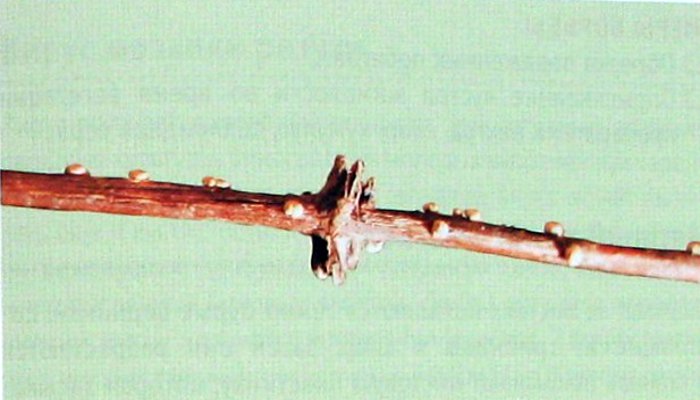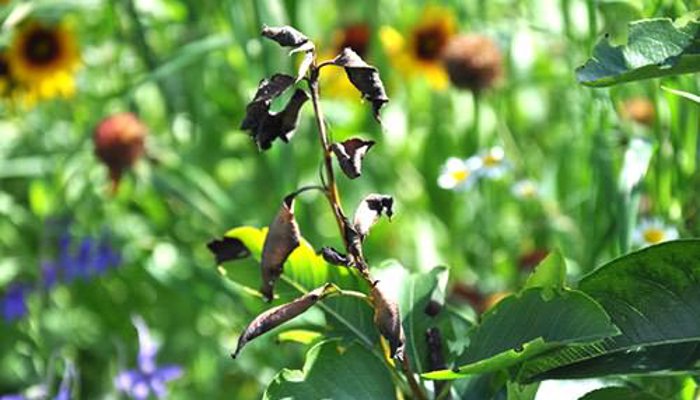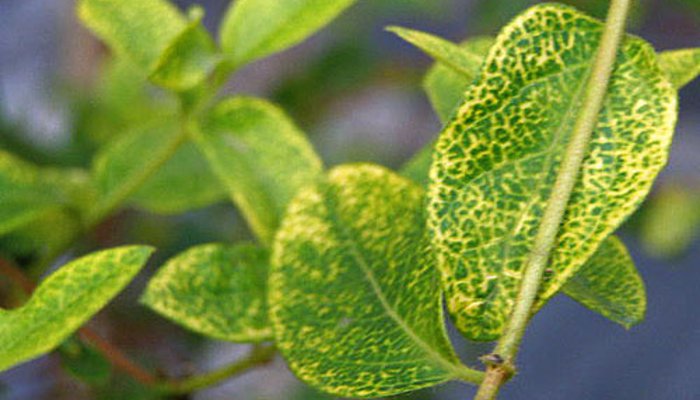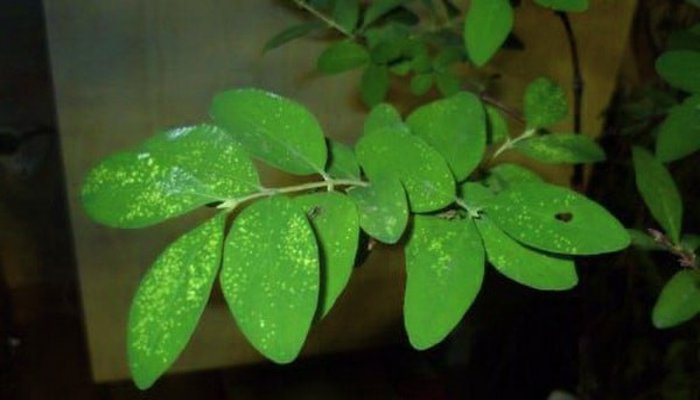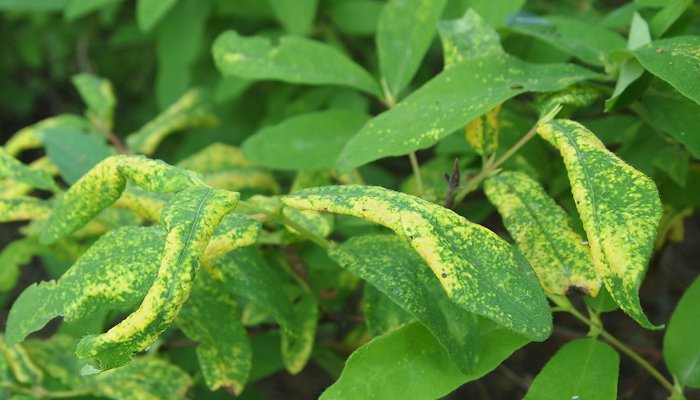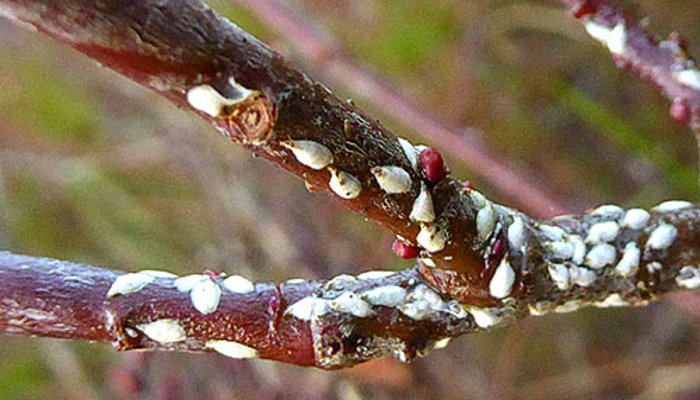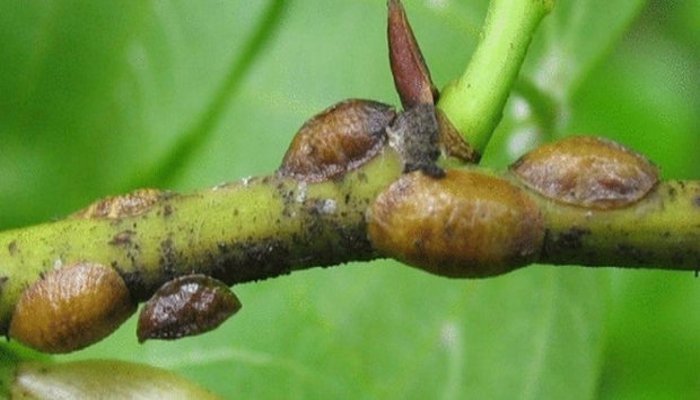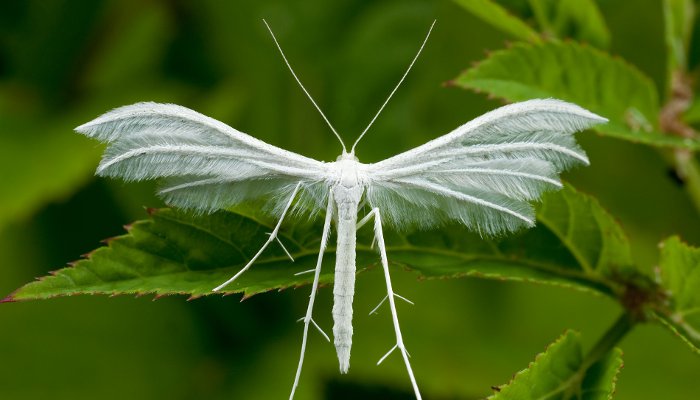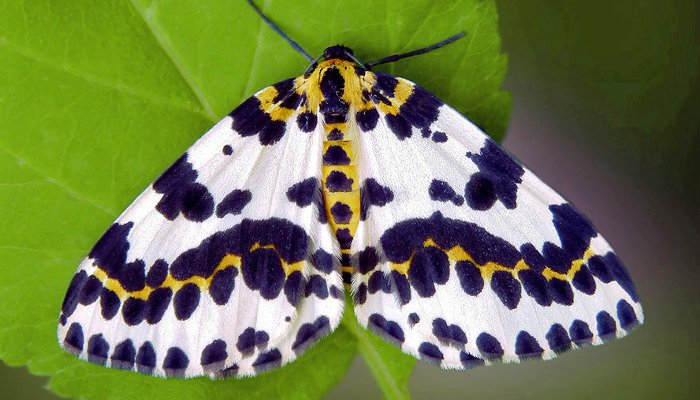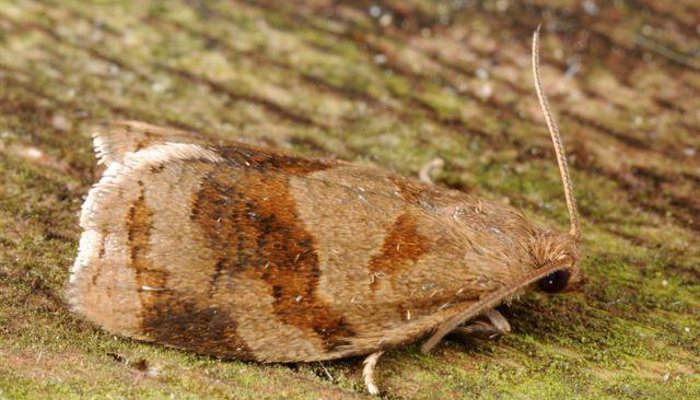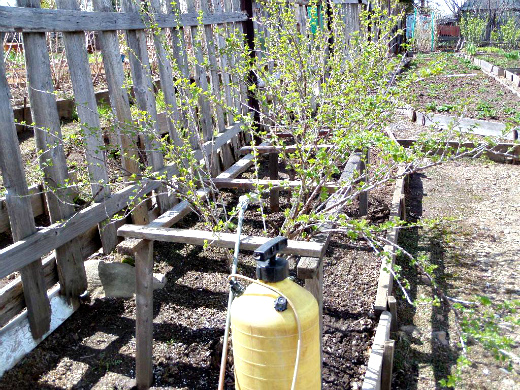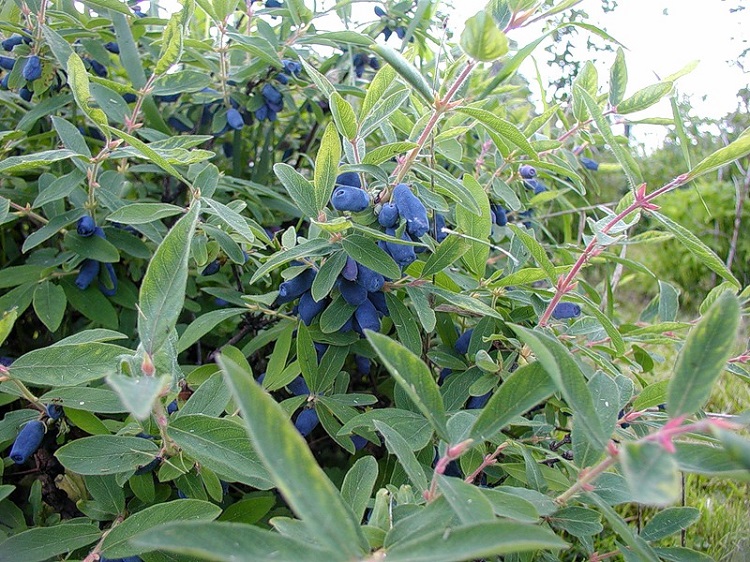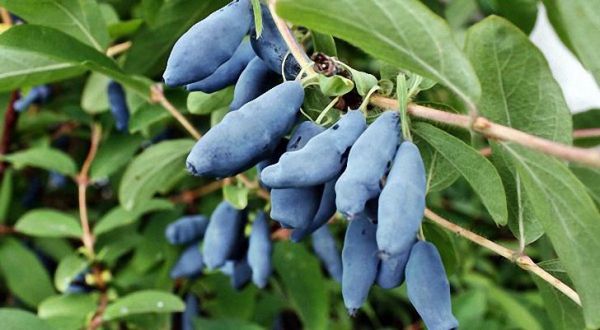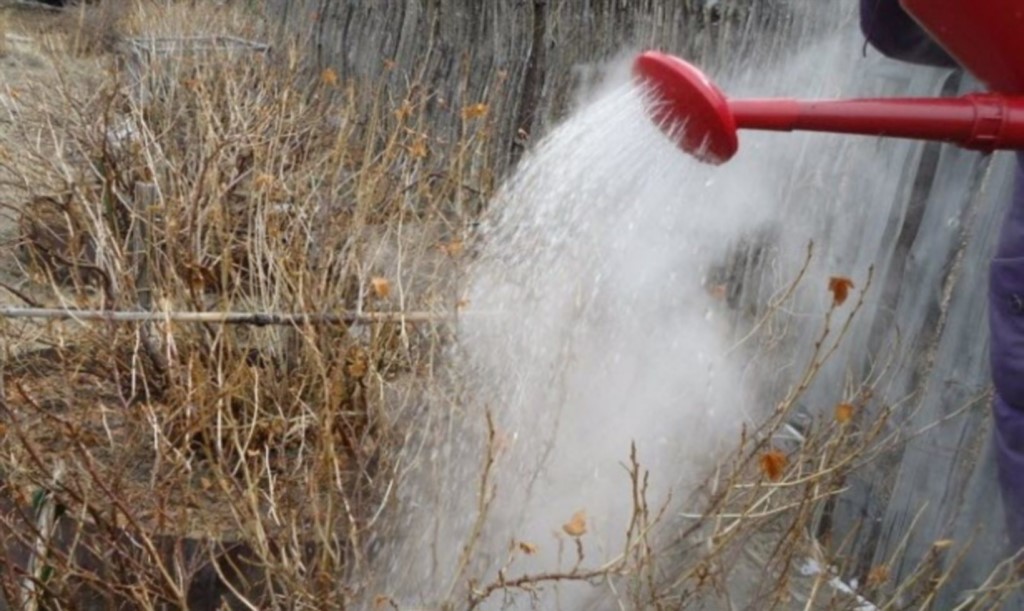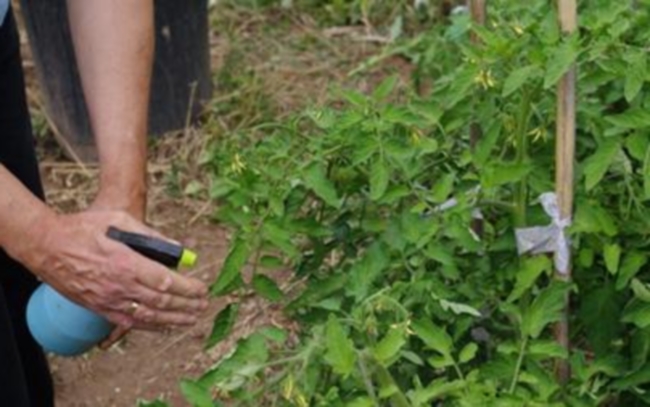Content:
- How ramulariasis affects honeysuckle
- Dangerous disease Cercospora
- Tuberculariosis causing drying of branches
- Flour mildew
- Blackening of leaves and drying of branches
- Speckled leaves on honeysuckle
- Viral disease mosaic rezuha
- Common pests of honeysuckle
- Prevention: treatment of honeysuckle with boiling water
All varieties of honeysuckle, including decorative climbing honeysuckle and shrub species with edible berries, are capable of getting sick or being invaded by harmful insects. This is facilitated by the increase in the popularity of the culture, because the processing of honeysuckle in the spring from diseases and pests is required. Growing this plant on the site requires a careful study of the diseases of honeysuckle, to know the description of the symptoms of infection and how to protect against parasites and viruses.
How ramulariasis affects honeysuckle
The fungal disease ramulariasis begins with the defeat of young leaves. On them there are spots of various shapes of brown with a brownish to the middle. Over time, they increase in size and capture the leaf completely, move to the stem and pericarp. Metabolism is disrupted, the roots weaken. After ripening, spores crumble and spread further along the plant. The fungus hibernates in the soil, and in the spring it continues its work again. To prevent the disease, honeysuckle is treated in the spring with a 1% solution of soapy copper sulfate.
The following measures are taken for diseased plants:
- The leaves affected by the fungus are removed and burned;
- Fallen leaves are removed.
Dangerous disease Cercospora
This fungal disease is characterized by small reddish-brown dots on the leaves. During high humidity, they are similar to a rash. So the spores of the fungus grow, spreading over the green part of the bush and leading to its drying out. There are especially many spores under the leaves. The spots first acquire a dirty green color, then turn brown or gray, forming a dark border around the edge. From diseased plants, spores are transferred to healthy bushes, spreading throughout the garden. The fight against the disease takes place in the spring. Sick bushes need to be sprayed using 1% copper-soap solution and 0.2% foundationol solution.
Disease control measures:
- Fallen and infected foliage is burned;
- Pruning is done to improve ventilation of the bush;
- It is necessary to feed the plant with mineral fertilizers;
- Before budding in spring and autumn, after the berries ripen, they are sprayed with fungicides, Bordeaux liquid and cuprozan bushes and aisles.
Tuberculariosis causing drying of branches
The disease begins in the spring with the growth of red growths containing spores on the branches and their spread throughout the bush. The growing mycelium destroys the branches, the leaves dry out. In the fall, the spores come out, crumbling around. When winter comes, they hide in the shoots, and in the spring they reappear on the bushes.
To combat, plants are sprayed with copper oxychloride or Bordeaux liquid. Infected branches are harvested and burned.
Flour mildew
The disease manifests itself in the form of a white cobweb coating on leaves and shoots.Young twigs are the first to fall ill, but gradually the disease takes over the entire plant. The leaves turn brown and fall off. The bark dries on the shoots, the branches deform, the plant withers.
The fungus is fought by burning leaves and infected branches. The first signs of the disease require an urgent start to treat the culture with preparations with sulfur.
Blackening of leaves and drying of branches
Another type of fungal disease is manifested by spots with a black coating on the leaves and shoots. They gradually increase in size. The foliage seems dirty, begins to dry out and fall off. The causative agent of the disease can also affect berries.
The following measures solve the problem:
- Pruning and removing dry and damaged shoots;
- Destruction of foliage;
- If you process the plant in early spring and after flowering with a Bordeaux mixture.
Speckled leaves on honeysuckle
Microscopic nematode worms change the color of the leaves. Specks, streaks and whitish spots appear on them.
It is impossible to cope with the disease with chemicals. The plant must be cleaned of affected tissues or the entire bush must be removed.
Viral disease mosaic rezuha
This disease is spread by nematodes. Young saplings of honeysuckle get sick. They begin to grow uncontrollably from the axillary leaves of the lateral shoots. Short internodes appear. The leaves stop growing, the plant dies.
In order not to bring this disease into the garden, they are attentive to the choice of seedlings. Honeysuckle with signs of illness is immediately destroyed. As a preventive measure, shoots damaged by frost are removed. On weakened wounded surfaces, fungi quickly settle and develop, leading the plant to death.
On a note. It will not be difficult to avoid diseases if you follow the rules of agricultural technology and choose a place for planting plants.
Common pests of honeysuckle
More recently, the plant had no enemies at all. But gradually she, like the others, acquired them. The pests of honeysuckle are as follows.
Honeysuckle aphid
Young branches are damaged. The leaves on them roll up into a tube, turn yellow and dry. The branches stop growing. For the fight in early spring, before the leaves bloom, Actellik and Confidor are used. After harvesting, the bushes are poured with a garlic-ash solution. In the fight against aphids, treatment with tobacco infusion is effective. It is necessary to spray in dry weather and do it very carefully.
Shields and False Shields
There are several types of scale insects: apple, willow and acacia. They are fixed on the bark and suck the sap from the plant, leading to death. If a scabbard appears on honeysuckle, how to deal with it can be suggested in any store that sells goods for the garden and vegetable garden. To combat, the drugs Actellik and Rogor are used. The popular way to fight is by spraying with kerosene.
Mites
There are several types of mites that parasitize honeysuckle. Insects are practically invisible to the naked eye. They love dense, dark and damp bushes. When settling on a plant, they make the leaves turn brown, become covered with waves at the edges and fall off. Treatment against ticks is carried out by Aktellik and Confidor.
Fingerwing
This is the name of the caterpillar that eats the pulp of the berries and makes them fall off. There are special drugs on sale to combat it - pyrethroids.
Leaf-eating pests
Caterpillars (moths, leaf rollers and sawflies) do not do much harm, but they eat the leaves, and the plant loses its decorative effect. Pests eat the leaf blades, leaving only the stalks, or roll the leaves into balls, entangling them with cobwebs. Caterpillars are harvested by hand or treated with Iskra, Inta-Vir and other similar preparations.
Note. Besides insects, there are other enemies of shrub plants. In the spring, gardeners sometimes find that honeysuckle has been gnawed by mice. What to do in this case? The damaged areas are treated with heteroauxin or succinic acid for recovery and smeared with garden varnish. A thin film of natural varnish adheres firmly, does not irritate plant tissues and helps the wound to heal faster. For minor damage, clay and cow dung are used.
Prevention: treatment of honeysuckle with boiling water
It is important not only to know the diseases of edible honeysuckle and their treatment, but also to prevent diseases. This plant is still a rare visitor to the plots, and gardeners are interested in whether it is possible to water honeysuckle with boiling water. Pests wintering on bush branches are dangerous for the future harvest. They are easiest to kill during hibernation in early spring. A proven and necessary method of struggle is a hot shower for the bushes. No chemical preparations can be compared in effectiveness with watering with boiling water. Hot water can kill pests, eggs, spores and fungal pathogens. Processing is carried out in the early spring period immediately after the snow melts before bud break. The root system is closed with any material at hand and watering is carried out with hot water from a watering can, trying to pour over the entire bush. You can add 1 tablespoon of caustic soda to the water per bucket of water. To facilitate processing, the branches are tied with twine.
This measure not only fights diseases and pests, but also increases the immunity of the plant, does not allow the berries to rot. The yield and taste of the fruit are increased, and their processing is facilitated. Therefore, to the question: is it possible to pour boiling water over honeysuckle, they unambiguously answer - not only possible, but also necessary.


